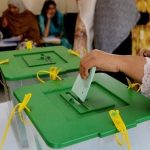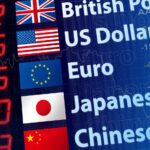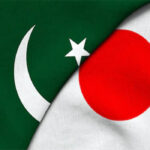KARACHI, Sep 21 (APP): State Bank of Pakistan on Monday decided to keep its policy (interest) rate unchanged at 7 percent till next meeting of its Monetary Policy Committee scheduled after two months.
SBP’s MPC in its meeting noted that compared to the time of its last meeting in June 2020, business confidence and the outlook for growth have improved, said SBP Governor Dr. Raza Baqir at a press conference.
SBP Governor said this reflected due the decline in Covid-19 cases in Pakistan and the easing of lockdowns, as well as the timely stimulus provided by the Government and SBP.
Average inflation is now expected to fall within the previously announced range of 7 – 9 percent during fiscal year 2020-21, rather than marginally below.
He said the MPC noted that financial conditions continue to be accommodating with real interest rates remaining slightly below zero on a forward-looking basis.
In addition, the series of targeted measures undertaken by SBP since the Covid-19 outbreak have injected significant liquidity and further lowered funding costs for many businesses and households.
Together, these monetary measures have injected an estimated stimulus of Rs 1.58 trillion, or about 3.8 percent of Gross Domestic Product, in the cash flow of businesses and households.
In addition, the government has undertaken a number of significant measures to support economic activity including the Ehsaas emergency cash program, commodity financing, a risk-sharing facility for SMEs, and acceleration of tax refunds.
Taking into account the changes in the outlook for inflation and growth since the last MPC and the impact of the stimulus measures undertaken by the Government and SBP, the MPC was of the view that the stance of monetary policy remained appropriate to provide needed support to the emerging recovery, while keeping inflation expectations well-anchored and maintaining financial stability.
In reaching its decision, the MPC considered key trends and prospects in the real, external and fiscal sectors, and the resulting outlook for monetary conditions and inflation, he said.
About the real sector, Dr. Raza Baqir said that following a deep contraction between March and June 2020, the large-scale manufacturing index returned to expansion in July 2020, growing at 5 percent year-on-year.
High-frequency demand indicators including auto sales, cement dispatches, petroleum products sales, and electricity consumption also reflect an encouraging pick-up in economic activity.
Nonetheless, the economic recovery remains uneven across industries, with the hospitality and certain services sectors especially lagging, and the level of activity generally still remains below pre-Corona levels.
Going forward, growth is projected to recover to slightly above 2 percent in fiscal year 2020-21, after falling to minus 0.4 percent last year.
The recovery is expected to be driven mainly by manufacturing-related activities and construction, which are being supported by various financial policies from SBP including the Temporary Economic Refinance Facility and the government’s incentives for housing and construction sectors.
On the downside, risks include a potential second wave of Covid-19 domestic infections, a possible sharp increase in infections in the winter months in Pakistan’s major export markets in Europe and the US, and the threat to agriculture from locust attacks. On the upside, a faster global recovery could lift exports higher, he said.
Referring to the external sector, SBP Chief said that despite a challenging environment, the external sector has remained resilient since the Coronavirus outbreak.
The flexible market-determined exchange rate, introduced in May 2019, has played its valuable role as a shock absorber, as witnessed in orderly two-way movement of the currency.
Low global oil prices and subdued domestic demand helped to reduce the current account deficit further during the onset of the Coronavirus.
More recently, a gradual recovery is expected in exports and remittances have performed strongly on the back of orderly exchange rate conditions as well as supportive policy steps taken by the Government and SBP under the Pakistan Remittance Initiative.
Remittances rose to a record monthly high in July and have topped $ 2 billion for the last three months.
By supporting the current account, which swung into a surplus in July, these developments have helped to restore SBP’s foreign exchange reserves to their pre-pandemic level of around US$ 12.8 billion.
As a result, Pakistan’s reserve adequacy is now back above the important global benchmark of 3 months of import cover.
Looking ahead, the current account deficit is expected to remain bounded at around 2 percent of GDP.
This, together with expected private and official flows, should continue to keep Pakistan’s external position stable in fiscal year 2020-21.
On fiscal sector, the Governor said that despite severe pressures from the Coronavirus and contrary to expectations, the fiscal deficit for fiscal year 2019-20 ended lower than in fiscal year 2018-19 and the increase in public debt was contained to around 1 percent of GDP.
This largely reflects the strong steps taken by the government to ensure a primary surplus in the first nine months of financial year 2019-20, which helped provide fiscal space to respond to the Coronavirus outbreak.
During the first two months of fiscal year 2020-21, in line with the gradual pick-up in economic activity, tax revenues returned to positive growth, averaging around 1.2 percent year-on-year.
While far below pre-pandemic growth rates, this recovery in tax collections represents an encouraging turnaround from the double-digit reduction observed during the last quarter of financial year 2019-20, although risks remain around achieving the revenue target.
Federal PSDP-related outlays almost doubled during July-August 2020 compared to the same period last year.
Overall, in line with this year’s budget, the MPC expects that the pre-pandemic path of fiscal consolidation will resume as economic activity recovers in coming quarters.
Elaborating the monetary and inflation outlook, the Head of Central Bank said the MPC noted that, notwithstanding an uptick in headline inflation during June and July, core inflation has been relatively stable and demand-side risks to inflation remain well-contained.
Like growth, the inflation outlook is also subject to certain risks.
On the upside, risks revolve around food prices, especially in the wake of recent flood-related damages and potential locust attacks. On the downside, the main risk stems from a lower-than-expected pickup in domestic activity. On the global front, the future trajectory of oil prices will also have an important bearing on the domestic inflation outlook.
He said in the wake of heightened risk aversion from banks due to the Coronavirus pandemic, private sector credit has recently been supported to a significant extent by SBP refinance facilities. These facilities, coupled with other supervisory actions related to deferment and restructuring of loans, have ensured the availability of necessary funding to businesses and households, providing important support to growth and employment.
Overall, the MPC was of the view that the current monetary policy stance is appropriate to support the emerging recovery while safeguarding inflation expectations and financial stability.
To a question from media, SBP Governor said during last fiscal year, the foreign exchange reserves of the country increased by dollars five billion as a result of the financial reforms initiated by Prime Minister Imran Khan.
“This increase in forex is not debit driven but through government reforms. And, the credit goes to the Prime Minister who took difficult decisions,” he remarked adding that State Bank had $ 12.8 billion reserves , which were enough for three months imports.
To another query about the progress in housing financing by banks linked to PM Housing and Construction Scheme, he said all the commercial banks had been bound to extend at least five percent of their loans to this scheme. The banks had been give quarterly targets on this account, which would come into effect from December 2020.
He said the Central Bank was seriously pursuing this scheme and for its timely successful execution, it had formed a steering committee to monitor/review the progress. Its regular meetings were being held with SBP Governor in the chair.
“ We are confident, construction section will boost in near future,” he re-affirmed.
He highlighted various measures taken by the Government and SBP to manage the economic crisis caused by COVID-19 outbreak. The entire world had suffered a lot after coronavirus and the situation was grave after that of Word War-II.
About foreign direct investment, he said that mainly it was coming from China and mostly landed in CPEC projects. Now, it has started coming also from United Kingdom and United States of America.







